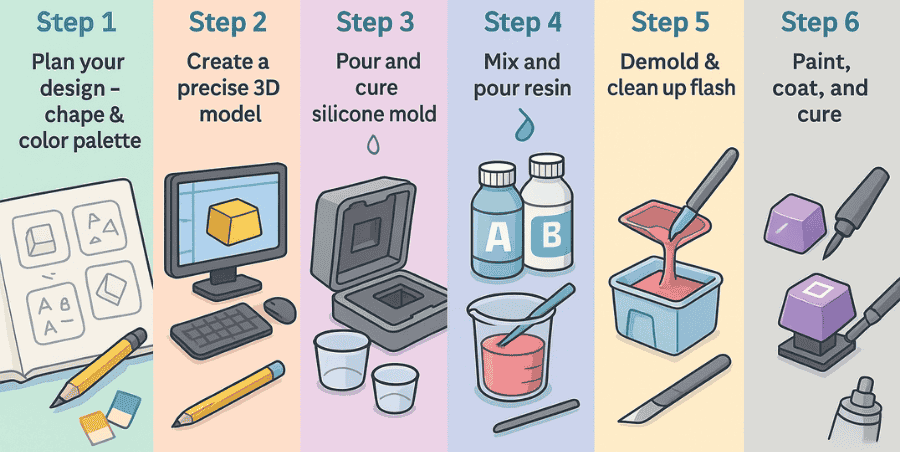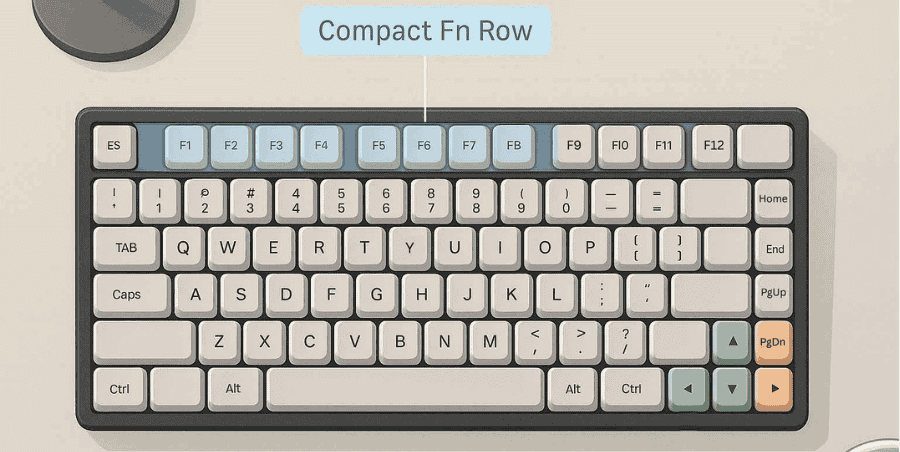When most people type, they keep looking down at their keyboard. That habit slows you down and is the first thing you should work on removing. Instead, train yourself to keep your eyes on the screen and let your fingers do the work. Another useful step is to check your current typing speed, so you can track your progress as you practice. In this guide, we’ll explore simple ways to build speed, improve accuracy, and make typing feel more natural over time.
1. Proper finger placement
The first thing to focus on is where you place your fingers. Your starting point should always be the home row of the keyboard. For your left hand, place your fingers on A, S, D, and F. For your right hand, place them on J, K, L, and ;. Both thumbs should rest lightly on the spacebar. This position is your base, and every time you press another key, your fingers should come back to these spots. At first, it might feel strange or uncomfortable, but with practice, your hands will get used to it. Once this becomes natural, you won’t need to look at your keyboard while typing, and your speed will start to improve automatically.
2. Keyboard Layout Basics
Once you are comfortable with finger placement, the next step is to practice each row of the keyboard. Start with the top row (QWERTY row). Try forming words using only the letters from that row. After that, move on to the home row (ASDF row) and practice words made from those letters. Finally, practice the bottom row (ZXCV row) in the same way.
This type of drill trains your fingers to reach every part of the keyboard without looking down. At first, you’ll probably make mistakes or hit the wrong keys by accident. That’s completely normal. The more you repeat these exercises, the more your muscle memory will improve. Over time, you’ll type faster and with fewer errors, and soon you won’t even think about where your fingers are.
A good tip is to set a timer for 5–10 minutes and focus on just one row at a time. Consistent short practice sessions are far more effective than long, tiring ones.
3. Technique to Boost Your Typing Speed
One technique that really helps is touch typing. This means you keep your eyes on the screen and type with your fingers without looking down at the keyboard. It feels strange in the beginning, but if you stick with it, your fingers will learn where the keys are.
At first, you’ll make mistakes and hit the wrong keys that’s normal. Focus on being accurate before worrying about speed. With practice, both accuracy and speed will improve.
You can check your typing speed with online tools. Sites like typing.com, keybr.com, and typingtest.com are great for this. They give you exercises and drills that slowly build your skills and even show you your progress.
When practicing, follow this order:
- Start with the top row (QWERTY row).
- Then practice the home row (ASDF row).
- Finally, move to the bottom row (ZXCV row).
This way your fingers get used to one row at a time, and it feels less overwhelming.
4. Proper Posture Matters
Now let’s talk about posture, because it really matters when you’re typing for long hours. Sit on a comfortable chair and keep your back straight, not slouched. Make sure your screen is at eye level. If your monitor is too high or too low, it will strain your neck over time.
Keep your shoulders relaxed, not stiff. Your elbows should be bent at about a 90-degree angle, and your wrists should stay in a neutral position not bent upward or downward. Place your feet flat on the floor so your body stays balanced and relaxed. Good posture not only helps you type longer without pain but also improves focus.
Another important thing is your keyboard. Investing in a good keyboard with responsive switches makes a big difference. It can reduce strain on your fingers, improve accuracy, and make typing feel smoother. If possible, use a wrist rest or a chair with good support to make long sessions more comfortable.
5. Typing progress and WPM Growth
Last but not least, make sure to track your typing progress. Keep an eye on your WPM (words per minute) so you can see how much you’re improving over time. Choose one website or platform and stick with it, because tracking your data in one place makes it easier to see growth through graphs and statistics.
Regular practice is the key. Even 10–15 minutes a day can make a noticeable difference in your speed and accuracy. Over time, the small improvements add up. Don’t worry if your progress feels slow at first consistency is what matters most.
Also, don’t forget to take micro-breaks while practicing. Short pauses give your hands, eyes, and mind a chance to rest, which prevents fatigue and keeps you motivated. Stretch your fingers, roll your wrists, and blink your eyes a few times before continuing.
By following these steps practicing daily, tracking your WPM, and resting properly you’ll steadily see improvements in your typing speed and comfort.
FAQ’S
Is 120 wpm good?
Typing at 120 words per minute is very rare. Only about 1% of typists worldwide reach that speed. On the other hand, 40 words per minute is the average and is usually enough for most needs.
Is there a “best” typing technique?
The most efficient typing method is touch typing, where you use eight fingers on the letters and your thumbs on the space bar. This lets you type without moving your hand around for each key.
What is the slowest typing speed?
The slowest typing speed is about 20 words per minute. A speed of 30–40 words per minute is still on the slower side, but functional.
Who can type 1000 WPM?
Typing 1000 words per minute is impossible for humans. The fastest records are between 200 and 300 words per minute, as seen in individuals and listed in the Guinness World Records.
Curious about more compact layouts? Learn why many typists and gamers prefer tenkeyless designs in our guide on what is a TKL Keyboard?



